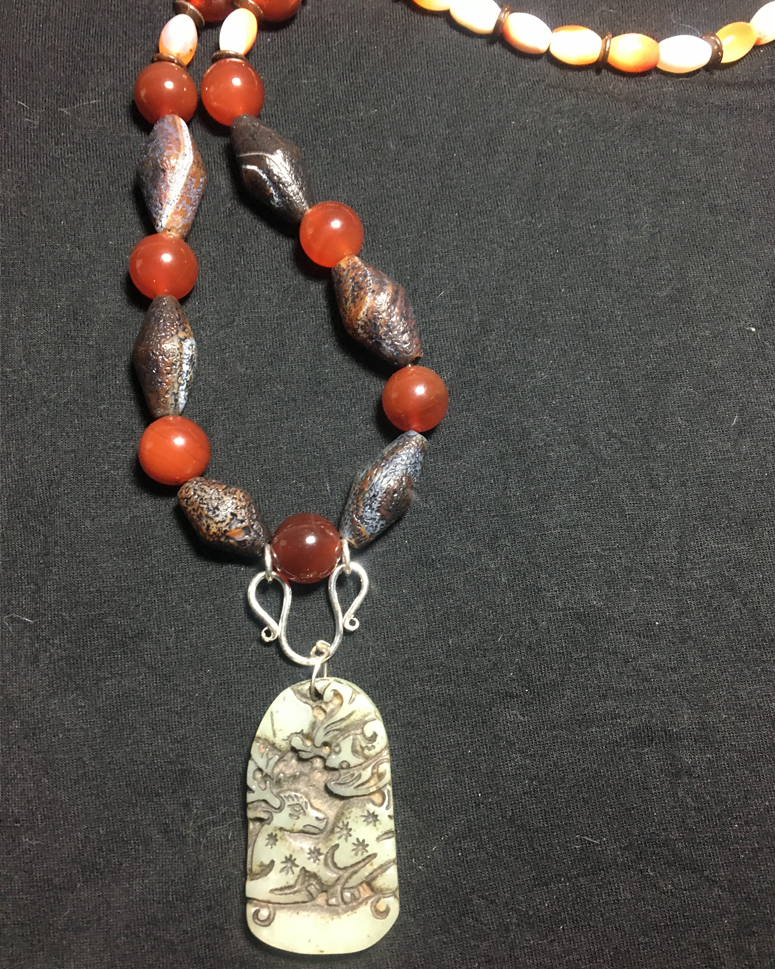Rare Tibetan 1940's Red Jade Deer/Bat Amulet with Antique Dzi and Agate Beads
Rare Tibetan 1940's Red Jade Deer/Bat Amulet, on Antique Dzi and Rare Agate Necklace
This Tibetan amulet dates from the 1940's, when Tibet was still an independent country. Many traditional Tibetan items such as this disappeared after the annexation of Tibet by China.
The Deer is symbolic of harmony, happiness, peace, and longevity. There are Tibetan legends in which deer help people to solve their problems.
The Bat, as an amulet, is used to attrack good luck, wealth and success, provide security, and to protect the wearer from anything negative. The highly developed sensory skills of the bat are said to be useful in locating good chi.
Red Jade is known as the chi stone. This amulet is not red in color, but has the red veins and so is considered red jade. It is said to be a stone of individual power and will, physical vitality and passion, which dispels worry and doubt that may hold you back. Red Jade is the stone of warriors: "The more powerful your opponents are, the more powerful power will be shown."
As you can imagine, this is a very rare and auspicious talisman/amulet, strung with antique Tibetan red agate and Dzi beads.
- 22" necklace of rare antique Tibetan agates and 2-eye red dzi beads
- 1-1/2" Old Red Jade Tibetan Amulet with carved Deer and Bat on sterling silver bail
- Signed with Quest for Space Hallmark
More about Dzi
Dzi beads are said to do a variety of things. Some protect you from negative experiences or accidents, some attract wealth or wisdom, while others might bring you love and happiness. This particular bead is said to grant wishes.
Dzi beads originate primarily in Tibet, and can often command high prices and are difficult to come by. They are often found in the grasslands or while cultivating fields. Because dzi are found in the earth, Tibetans do not conceive of them as man-made. Tibetan Dzi beads are felt by Tibetans to be of supernatural origin.
Knowledge of the dzi beads is derived from oral traditions, and there is no one story concerning the origin of dzi. One belief is that in ancient times dZi were the ornaments of demi-gods who threw them away if they became blemished even slightly; the reason why hardly any of the beads are found in perfect condition. It is also believed that even after the beads have been unearthed, some will continue to move about for a little while.
Tibetans cherish these beads and consider them hereditary gems. In this way they have survived thousands of years, being worn by hundreds of individual people.
Few beads have provoked more controversy concerning their source, method of manufacture and even precise definition. They are the most sought after and collectable beads on earth.




